Involvement of serum-derived exosomes of elderly patients with bone loss in failure of bone remodeling via alteration of exosomal bone-related proteins
- PMID: 29603567
- PMCID: PMC5946082
- DOI: 10.1111/acel.12758
Involvement of serum-derived exosomes of elderly patients with bone loss in failure of bone remodeling via alteration of exosomal bone-related proteins
Abstract
Exosomes are secreted into the blood by various types of cells. These extracellular vesicles are involved in the contribution of exosomal proteins to osteoblastic or osteoclastic regulatory networks during the failure of bone remodeling, which results in age-related bone loss. However, the molecular changes in serum-derived exosomes (SDEs) from aged patients with low bone density and their functions in bone remodeling remain to be fully elucidated. We present a quantitative proteomics analysis of exosomes purified from the serum of the elderly patients with osteoporosis/osteopenia and normal volunteers; these data are available via Proteome Xchange with the identifier PXD006463. Overall, 1,371 proteins were identified with an overlap of 1,160 Gene IDs among the ExoCarta proteins. Bioinformatics analysis and in vitro studies suggested that protein changes in SDEs of osteoporosis patients are not only involved in suppressing the integrin-mediated mechanosensation and activation of osteoblastic cells, but also trigger the differentiation and resorption of osteoclasts. In contrast, the main changes in SDEs of osteopenia patients facilitated both activation of osteoclasts and formation of new bone mass, which could result in a compensatory elevation in bone remodeling. While the SDEs from aged normal volunteers might play a protective role in bone health through facilitating adhesion of bone cells and suppressing aging-associated oxidative stress. This information will be helpful in elucidating the pathophysiological functions of SDEs and aid in the development of senile osteoporosis diagnostics and therapeutics.
Keywords: bone remodeling; exosome; osteoblasts; osteoclasts; osteoporosis.
© 2018 The Authors. Aging Cell published by the Anatomical Society and John Wiley & Sons Ltd.
Figures
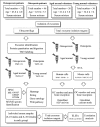
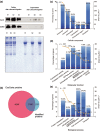
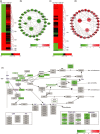
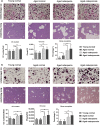
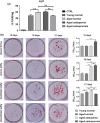
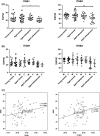
Similar articles
-
Serum-derived exosomes from neurofibromatosis type 1 congenital tibial pseudarthrosis impaired bone by promoting osteoclastogenesis and inhibiting osteogenesis.Exp Biol Med (Maywood). 2021 Jan;246(2):130-141. doi: 10.1177/1535370220962737. Epub 2020 Oct 6. Exp Biol Med (Maywood). 2021. PMID: 33023333 Free PMC article.
-
[Proteomics analysis of serum exosomes and its application in osteoporosis].Se Pu. 2019 Aug 8;37(8):863-871. doi: 10.3724/SP.J.1123.2019.04022. Se Pu. 2019. PMID: 31642257 Chinese.
-
Exosomes: mediators of bone diseases, protection, and therapeutics potential.Oncoscience. 2018 Jun 23;5(5-6):181-195. doi: 10.18632/oncoscience.421. eCollection 2018 May. Oncoscience. 2018. PMID: 30035185 Free PMC article. Review.
-
The Regulatory Roles of MicroRNAs in Bone Remodeling and Perspectives as Biomarkers in Osteoporosis.Biomed Res Int. 2016;2016:1652417. doi: 10.1155/2016/1652417. Epub 2016 Mar 17. Biomed Res Int. 2016. PMID: 27073801 Free PMC article. Review.
-
Dominoes with interlocking consequences triggered by zinc: involvement of microelement-stimulated MSC-derived exosomes in senile osteogenesis and osteoclast dialogue.J Nanobiotechnology. 2023 Sep 23;21(1):346. doi: 10.1186/s12951-023-02085-w. J Nanobiotechnology. 2023. PMID: 37741978 Free PMC article.
Cited by
-
Serum extracellular vesicles expressing bone activity markers associate with bone loss after HIV antiretroviral therapy.AIDS. 2020 Mar 1;34(3):351-361. doi: 10.1097/QAD.0000000000002430. AIDS. 2020. PMID: 31725429 Free PMC article.
-
Meta-analysis of proteomics data from osteoblasts, bone, and blood: Insights into druggable targets, active factors, and potential biomarkers for bone biomaterial design.J Tissue Eng. 2024 Nov 29;15:20417314241295332. doi: 10.1177/20417314241295332. eCollection 2024 Jan-Dec. J Tissue Eng. 2024. PMID: 39620099 Free PMC article.
-
The biological function of integrin-linked kinase on bone formation.Bone Rep. 2025 Mar 10;25:101834. doi: 10.1016/j.bonr.2025.101834. eCollection 2025 Jun. Bone Rep. 2025. PMID: 40171447 Free PMC article. Review.
-
Exosomes and Extracellular RNA in Muscle and Bone Aging and Crosstalk.Curr Osteoporos Rep. 2019 Dec;17(6):548-559. doi: 10.1007/s11914-019-00537-7. Curr Osteoporos Rep. 2019. PMID: 31741222 Free PMC article. Review.
-
Extracellular Vesicles in Blood: Sources, Effects, and Applications.Int J Mol Sci. 2021 Jul 29;22(15):8163. doi: 10.3390/ijms22158163. Int J Mol Sci. 2021. PMID: 34360924 Free PMC article. Review.
References
-
- Barker, A. L. , McNeil, J. J. , Seeman, E. , Ward, S. A. , Sanders, K. M. , Khosla, S. , … Talevski, J. (2016). A randomised controlled trial of low‐dose aspirin for the prevention of fractures in healthy older people: Protocol for the ASPREE‐Fracture substudy. Injury Prevention: Journal of the International Society for Child and Adolescent Injury Prevention, 22, 297–301. 10.1136/injuryprev-2015-041655 - DOI - PMC - PubMed
-
- Chen, Y. , Xie, Y. , Xu, L. , Zhan, S. , Xiao, Y. , Gao, Y. , … Ge, W. (2017). Protein content and functional characteristics of serum‐purified exosomes from patients with colorectal cancer revealed by quantitative proteomics. International Journal of Cancer, 140, 900–913. 10.1002/ijc.30496 - DOI - PubMed
Publication types
MeSH terms
Substances
LinkOut - more resources
Full Text Sources
Other Literature Sources
Medical
Molecular Biology Databases

